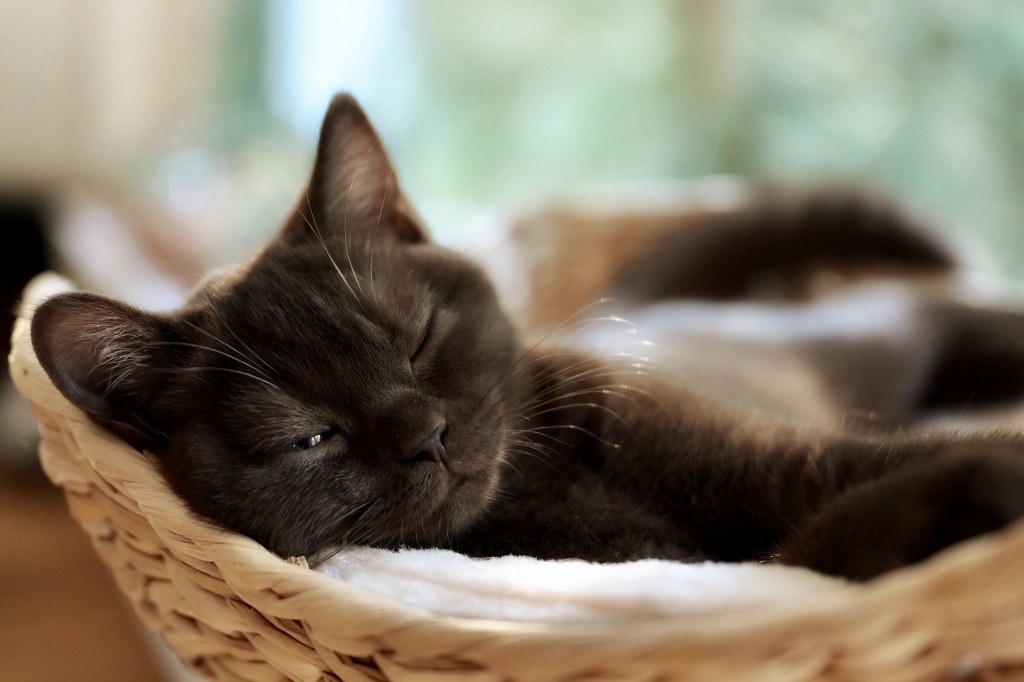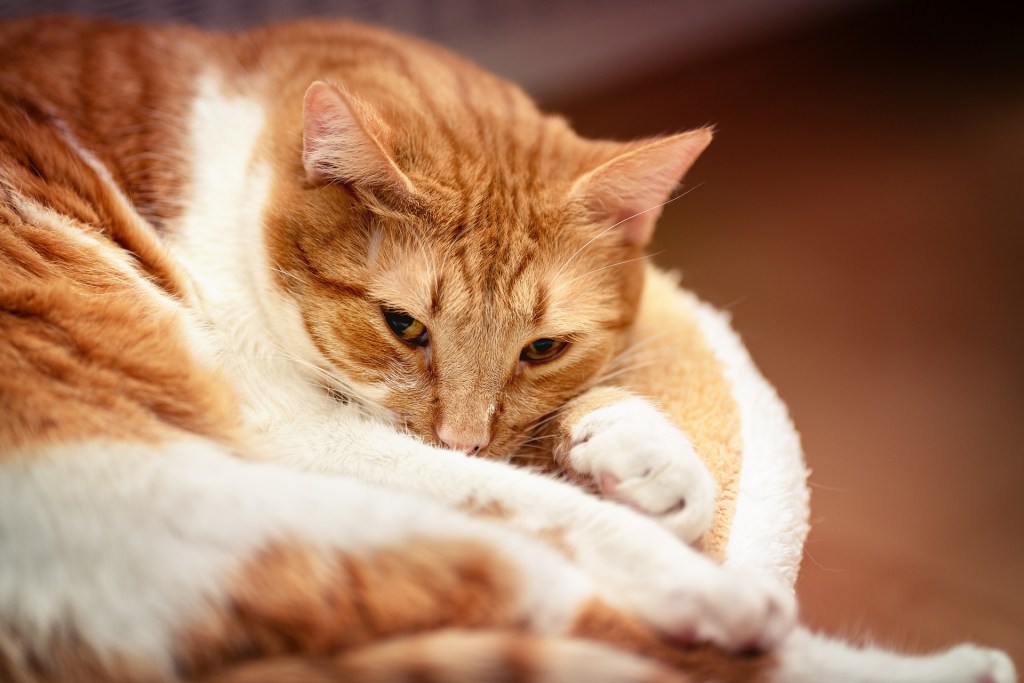If you’re looking for a way to keep your cat extra cozy this winter, you might consider getting him a heated cat bed. Heated beds offer many benefits to cats, and those benefits go beyond just keeping your cat warm. If your cat is sleeping curled up on that heated surface, he’ll enjoy toasty comfort and you might notice he’s a happier cat who sleeps more deeply. Cats love to be warm and cozy, so whether your home gets a little chilly or you want to provide a stray cat with some shelter against the winter weather, a heated cat bed might be a great choice.

Improved comfort
Heat has wonderful pain-relieving properties, and your cat can benefit from them with a heated bed. When your cat is curled up on a heated bed, that heat can help to loosen stiff, tense, and sore muscles. It can also help to relieve joint discomfort, like arthritis, soothing your cat and making him feel relaxed. Your cat may be more comfortable and better able to move after he’s slept on a heated bed.
Improved sleep quality
By improving your cat’s comfort, you’ll be helping him to sleep better, too. Rather than being tense because he’s cold or stiff, your cat can relax more on a heated bed. He’ll be better able to sleep comfortably, and because he’s more relaxed, he should be able to get exceptional sleep.
Better mood
When your cat is warm, cozy, and comfy, he’s more likely to be in a happier mood. The health-supporting properties of a heated bed can benefit your cat, especially when he is older or has ailments that limit his mobility. As a result, your cat may be more peaceful and extra receptive to your patting and giving him attention.

Increased immune system health
If your cat spends a lot of time outdoors and is often exposed to low temperatures, these conditions can weaken his immune system. A heated cat bed can give him a place to get out of the cold, supporting his health. If your cat is already sick, then being able to warm up is even more important.
Heated cat houses help in this situation, but in extreme temperatures, it is ideal to bring your cat inside, entirely out of the cold.
How to choose the best heated bed for your cat
Heated cat beds aren’t all the same, and it’s important to know what to look for when choosing the one that’s right for your cat. Start by looking for a bed that features a cord that’s designed to be chew-proof. You don’t want your cat trying to snack on the electrical cord, so look for one that’s wrapped and protected against kitty teeth. Make sure that the bed is also manufactured with multiple layers and designed so your cat’s claws can’t penetrate through to the wires that run within the bed.
It’s also important to choose a bed with an auto-off feature. An auto-off design paired with a timer means you won’t be wasting electricity, and you won’t accidentally leave the bed running for hours and hours when your cat isn’t using it.
You may also want to look for a bed with adjustable power settings, like the Pet Heating Pad for Dogs and Cats. This bed features an adjustable temperature setting that ranges from 86- to 131 degrees Fahrenheit, so you can choose the temperature that’s just right for your cat. Adjustable temperature settings mean you won’t be wasting extra electricity heating a bed to be warmer than it really needs to be.
If you’re not wild about the idea of an electrically heated bed, consider a self-warming cat bed, like the ThermaNAP Cat Bed Pad. This electricity-free pad features insulating fiber batting plus mylar, so it reflects your cat’s body heat to make the surface warm and cozy. This thermal pad is lightweight and easily portable, so you can move it around the house to all of your cat’s favorite sleeping spots.
Keep your kitty cozy
Investing in a heated cat bed can help to keep your cat super comfy when the weather is nippy. That bed can also offer valuable pain-relieving properties, and it can support a strong immune system to help keep your kitty healthy, too. Plus, you’ll have the satisfaction of watching your cat seek out his cozy spot when it’s chilly in the house. If you decide that your cat would benefit from a heated bed, take some time to explore the options available and look for a bed that’s designed to be safe, but that also has the features you want.
Editors' Recommendations
- Why do cats twitch in their sleep? The real reasons behind this curious behavior
- Why do cats cover their face when they sleep? This adorable behavior, explained
- Why do cats lick themselves? It goes beyond just cat grooming
- Why do dogs hate cats? The truth behind this age-old grudge
- Why do cats have 9 lives? The origins of the saying



